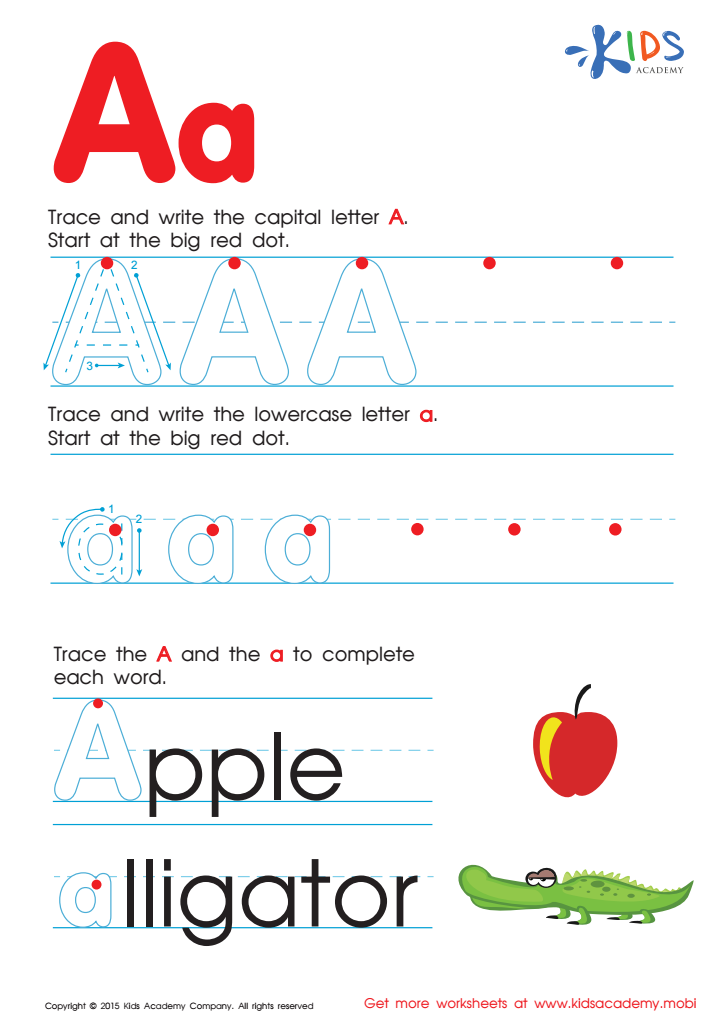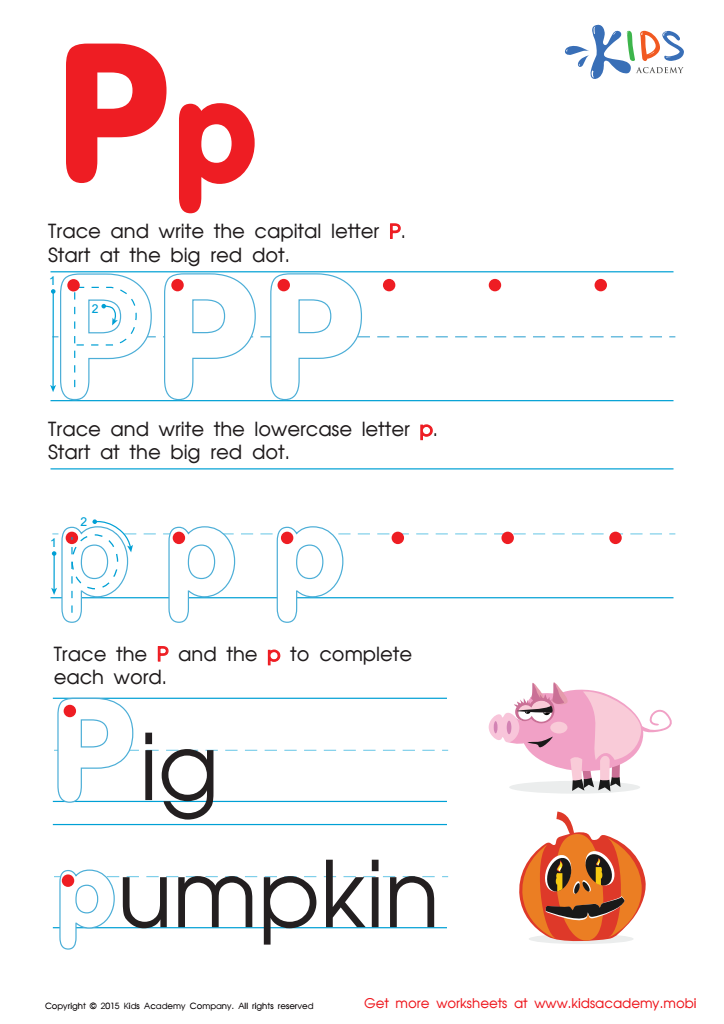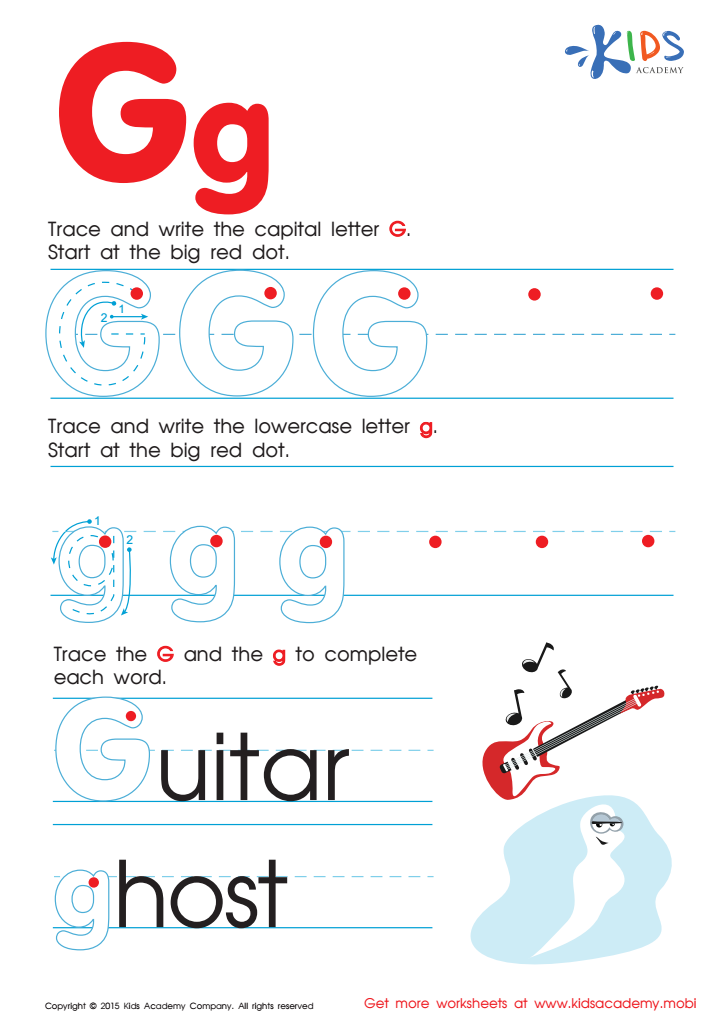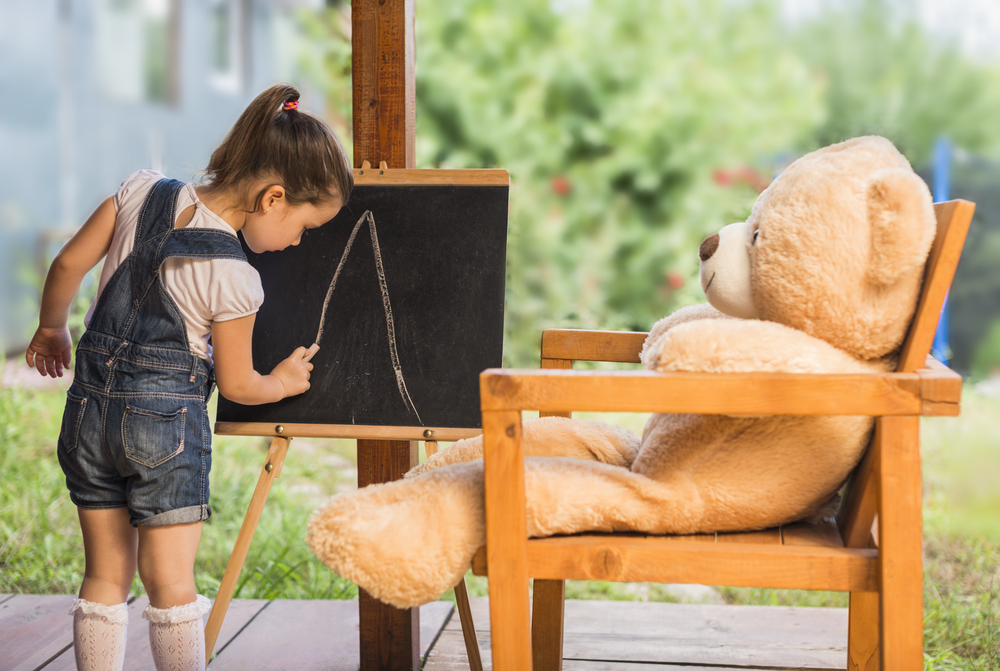Letter formation ABC Order Worksheets for Ages 3-6
3 filtered results
-
From - To
Introducing our "Letter Formation ABC Order Worksheets" designed specifically for ages 3-6! These engaging sheets are perfect for young learners beginning to explore the alphabet. With a focus on proper letter formation and sequence, children will build essential pre-writing skills. Each worksheet incorporates fun and interactive activities to motivate little ones and enhance their learning experience. Ideal for both classroom and home use, these worksheets aid in developing fine motor coordination, letter recognition, and handwriting precision. Set the foundation for successful reading and writing with our expertly crafted resources. Let the alphabet adventure begin!


Letter A Tracing Page


Letter P Tracing Page


Letter G Tracing Page
Parents and teachers should care deeply about letter formation and ABC order for children aged 3-6 because these foundational skills are crucial for early literacy development. Proper letter formation helps children develop the fine motor skills necessary for writing, ensuring they can smoothly move from drawing lines and shapes to forming recognizable letters. This fosters handwriting that is legible and efficient, reducing frustration and boosting confidence.
Understanding ABC order, or alphabetical order, lays the groundwork for reading and organizational skills. Children who grasp the sequence of the alphabet can more easily understand and use dictionaries, indexes, and other reference materials later on. It also aids in phonemic awareness — recognizing that letters correspond to sounds, which is a critical precursor to reading proficiency.
Moreover, practicing these skills at an early age stimulates cognitive development. Through repeated exercises in letter formation and sequencing, children improve their memory, attention to detail, and pattern recognition. This holistic growth enhances overall learning capabilities, making it easier for them to acquire more complex literacy and language skills as they progress in their education journey.
In summary, focusing on letter formation and ABC order sets a solid foundation for academic success, fostering both the physical and cognitive development of young learners.
 Assign to My Students
Assign to My Students















